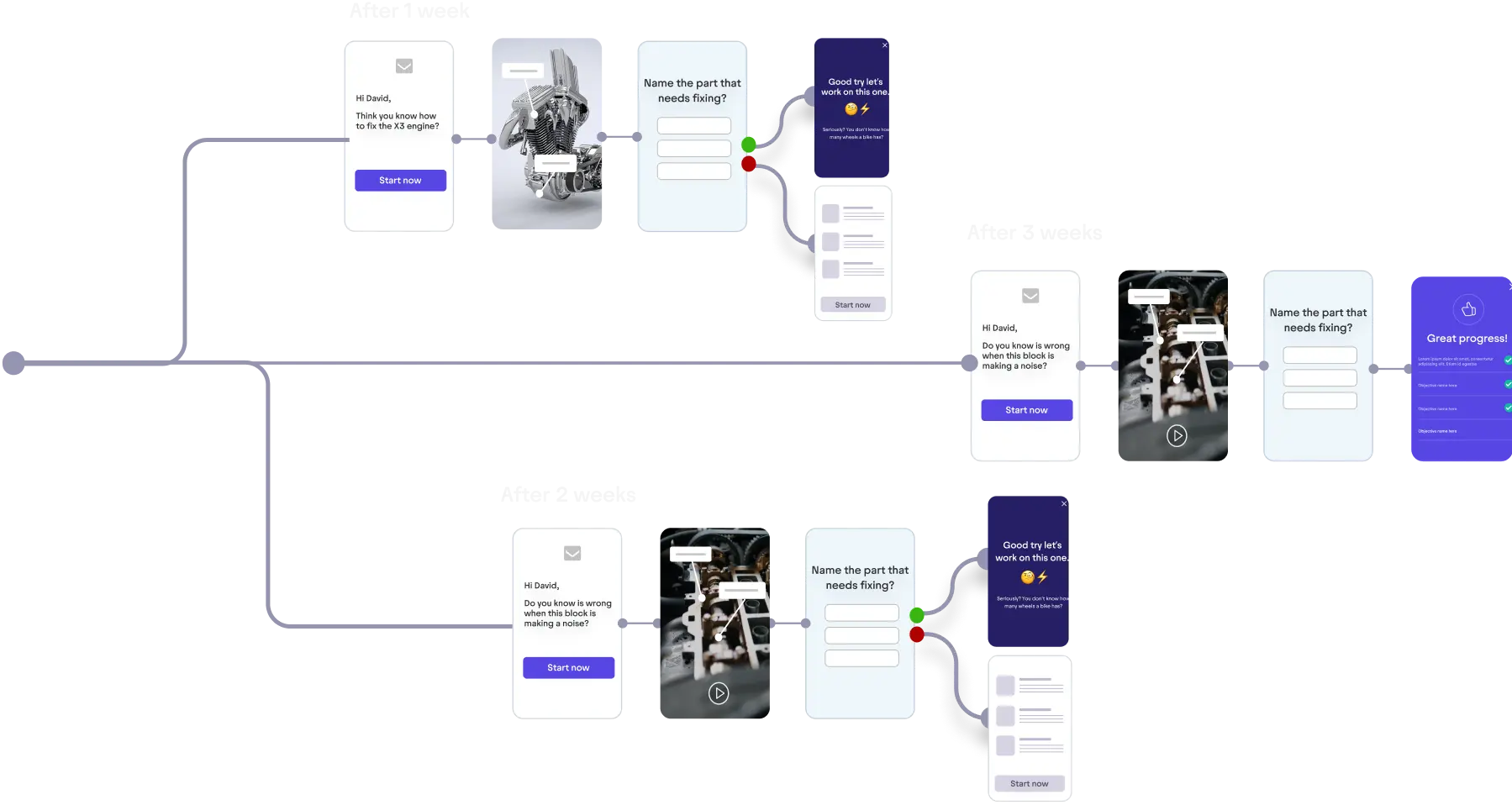
People have limited time and attention
You want your target audience to know something so you create a course and ask them to complete it. The trouble is, people don’t really like doing courses unless they know why it’s going to help them or if someone made them do it. If the course has a lot of learning that may or may not be relevant to someone, it’s a hard ask to get them to spend their valuable time and attention on it.
Non-mandated learners outside the LMS
In traditional learning systems you put your course in the LMS and assign it to the relevant learners. They are required to complete mandated courses by their employer and usually get time to do them. External learners i.e. contractors, customers or partners may or may not be able to access the LMS and generally aren’t mandated to complete training. You can ask them, but if they don’t have to do it they probably won’t.
Marketing learning 101
People need to be aware they need something or they have a problem. You can’t sell a training solution to a problem no one knows they have. This applies to learners and asking them to spend time on training, they need to realise that there are gaps in their knowledge that need filling. Learning campaigns apply basic marketing theories to make people realise they need to know something.
Learning is a journey
Educating an audience isn’t usually achieved in a single setting. Expecting learners to complete a course and then start acting upon this new skill or knowledge is far-fetched. Learning campaigns are designed to give learners time to think between episodes of learning to let the new information percolate. For many audiences, often the learning can be applied straight away and the impact of the new knowledge can have a demonstrable effect.
Spaced repetition
People need to be reminded and they need to think about things a few times for it to sink in. The theory of spaced repetition is really good for making learning stick and reminding people that they may need to know something important. Nudging theory is also based on the timing of information and how often people need to be made aware of something.
Bite sized chunks
The key with learning campaigns is keeping the learning snackable and digestible, with narrow focus on key aspects of behavioural change or capability building. The communication around the learning needs to be clear on the problem it’s going to solve for the learner and the outcome that they’ll benefit from. Ideally no more than 5 minutes of learning, but with the option for the learner to continue if they want to expand or explore more.
Make it a soap opera
With behavioural change around human interaction, a good technique to borrow from is a soap opera. Developing characters that the learner gets to know and giving them problems to solve. Then releasing chunks of the learning as episodes that the learner can expect and look forward to the next instalment. Getting the learner to connect with the characters and provoke an emotional response is known to have a much greater impact on learning outcomes.
Learning in the inbox
One of the issues with external learners and standard learning management systems is getting learners to log into yet another SaaS platform. It creates a lot of friction around remembering URLs, passwords and other roadblocks to learning. Learning campaigns are designed for one click direct access straight from the email, so the learning opens in the same screen and doesn’t require the learner to log in.
Targeted learning interventions
A key focus of learning campaigns to deliver outcomes, whether it’s a changed behaviour, new skill or knowledge gained. Campaigns should assess and measure those key outcomes and then assign targeted learning interventions to fill the gaps or solve the problem. Interventions can include short modules, nudges or other learning content to address the desired outcomes.

